Minimizing efficiency loss is key to success for next-generation EV-Mobility
Overview
The accelerating adoption of Electric Vehicles (EVs) and globally competitive markets require automakers to deliver continual improvements in drivetrain efficiency. As power density increases, one of the key inflection points for efficiency improvement is the electrical interfaces between batteries, DC-to-AC power inverters, and AC traction motors.
This Tech Bulletin provides an overview of how new complex multi-layer molded busbar technologies can deliver significantly improved electrical performance from batteries to the power inverters and into the motors, while at the same time streamlining overall assembly processes.
Market Trends in Power Inverters
Transformation in EV mobility powertrain technology is being driven by two major trends:
- Higher performance advances in power inverter chips and systems, such as improved inverter/converter topologies and components (GaN or SiC), are enabling much higher overall power density.
- The transition from discrete interconnected sub-systems to fully integrated systems, which enables saving of costs on redundant parts while optimizing performance, reducing volume, weight and cost. (See this Motor Stator Technical Bulletin as an example of integration.)
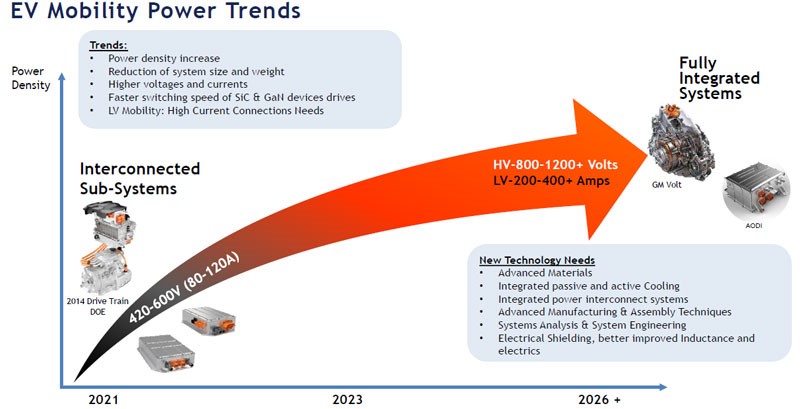
Inverter Performance Advances
A range of converging technologies has been steadily driving higher performance and efficiency within power inverters. Some of these key technology areas include:
- Faster chip-level switching speeds using technologies such as silicon carbide (SiC) and gallium nitride (GaN).
- Chip Scale Packaging and custom discrete components to support higher scalability.
- Sintering die-attach methods to improve reliability in smaller packaging sizes.
- Top-side die-attach with double-sided cooling.
- Increased Power Density with higher voltages and current levels.
System Integration Challenges
These ongoing power inverter technology advances, along with increased switching speeds, voltages of 1200V to 1800V, and temperatures up to 180 degrees Celsius, are creating new challenges for system integration. The key integration challenges include:
- Handling increased power density.
- Dealing with higher junction temperatures.
- Need for improved sealing and cooling methods.
- Managing electrical creep distances and inductance challenges.
- Minimizing weight, size, and heat dissipation.
Impacts on Busbar Designs
These overarching trends in power inverters and system integration have significant implications for the design of custom busbars, which provide the power interconnects between batteries, inverters and motors. The emerging busbar design challenges include:
- Custom integration of busbar form factors.
- Wider and more conductive surface areas.
- Improved materials and cooling methods for handling higher temperatures.
- Providing shorter current paths between assemblies.
- Minimizing air & creep phenomena (undesired loss in power and breakdown of insulation).
- Expanding functionality with direct component integration on busbars.
- Minimizing inductance with +/- matching for inductance cancellation.
- Using innovative connection methods, such as pluggable vs. bolt-on or laser welding.
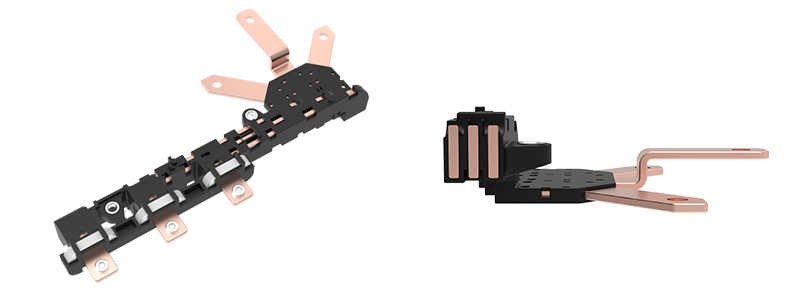
Checklist Questions to Guide Design Process
Today’s designers need to take a holistic approach to busbars by treating them as an integral factor within the overall powertrain system, instead of the conventional approaches that too often treated busbars as just simple, add-on connectors.
Best practices for today’s power systems should always start with collaboratively answering these key questions, preferably in conjunction with knowledgeable and experienced busbar design and manufacturing partners.
- The application where the busbar will be installed?
- Assembly process of the busbar in the application?
- Voltage level requirements?
- Current level requirements?
- Ambient and functional temperatures at busbar?
- Insulation dielectric requirements and methods?
- Connection alignment and assembly methods?
- Sealing and cooling approaches and methods?
- Coefficient of Thermal Expansion (CTE) mismatches among various materials?
Key Busbar Design and Construction Approaches
Overall Considerations
- Maximize integration with application-specific form factors.
- Minimize thermal stress factors for longer life cycles.
- Use a balanced design approach to minimize warpage.
- Avoid sharp edges and corners on stampings.
- Optimize molding processes and materials to minimize CTE mismatch stresses.
- Minimize fixation points and maximize flexibility.
Materials Issues
Choice of materials is a critical factor in the success of any busbar design and integration project. With extensive experience in materials science and application design for harsh environments, ENNOVI has conducted significant research on the various materials options.
Busbar performance will depend upon the composite materials used to construct the busbar. The ENNOVI molded busbars employ either copper or aluminum conductors in various thicknesses: standard thicknesses from 0.5 to 8.0mm for copper and from 0.25 to 5.0mm for aluminum. For any EV/HEV application where heat is a concern, copper offers superior thermal characteristics to aluminum, with thermal conductivity of 401W/mK for copper compared to 237W/mK for aluminum, and thermal expansion of 16.5ppm/K for copper compared to 23.1ppm/K for aluminum.
Aluminum busbars are attractive for EV/HEV applications because they provide reliable electrical performance while helping to save total system weight since aluminum busbars are typically 50% lighter than copper busbars. For equivalent electrical/thermal performance, however, the cross-section of an aluminum busbar will be greater than that of a copper busbar with, for example, a 1mm copper conductor replacing a 2mm aluminum conductor. For EV/HEV applications, copper busbars offer excellent solutions where space is tight, while aluminum busbars, enable efficient energy distribution with weight savings compared to copper. Aluminum is also less costly than copper.
Regarding fill materials, ENNOVI busbar design teams have found good results with high-temperature, glass-filled plastic molding solutions, such as Polyphenylene Sulfide (PPS), PPA, or PBT, depending on the needs, that can deliver the best combination of thermal characteristics, electrical performance, chemical resistance and material strength needed for success. We have also used non-traditional materials for various coatings like aluminum oxide and integration of insulator films like PET, Mylar, Mica and others. More information on materials is available from ENNOVI.
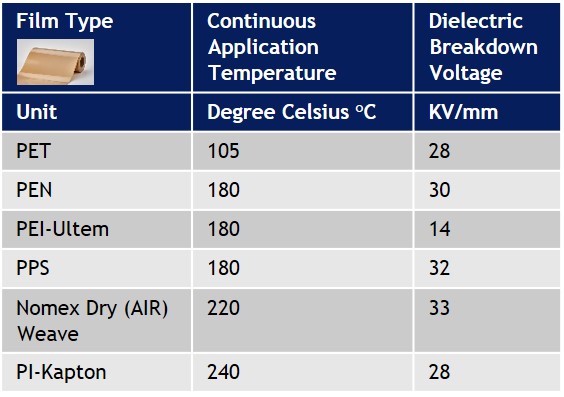
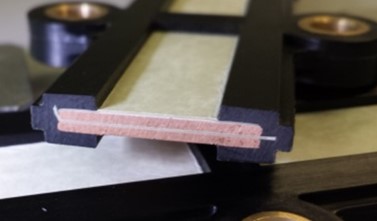
A key objective is to achieve the best balance between materials cost and functionality to meet the varying application requirements. For example, a product design that may integrate a combination of insulating films assembled and over-molded plastic could strike a balance between the use of more expensive materials and a robust functional design to withstand harsh functional environments.
Busbar Construction Best Practices
Minimize the Amount of Plastic and Shorten Plastic Lengths
Conventional approaches to leaving space between busbar elements and filling with a plastic flow are no longer able to keep up with customization and integration requirements. New approaches look to minimize the amount of plastic to reduce CTE mismatches.
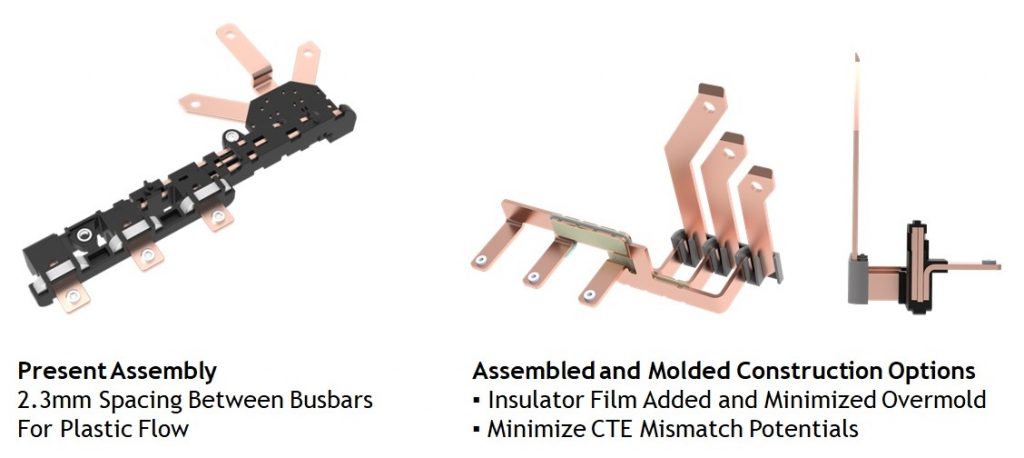
Incorporate Stress Relief and Flexibility into the Busbar Design
It is also becoming increasingly important to holistically design for optimal flexibility to minimize stresses from both temperature and vibrational factors. Key mitigation methods include building in busbar edge relief to distribute stresses and using flexible connections into the full assembly.
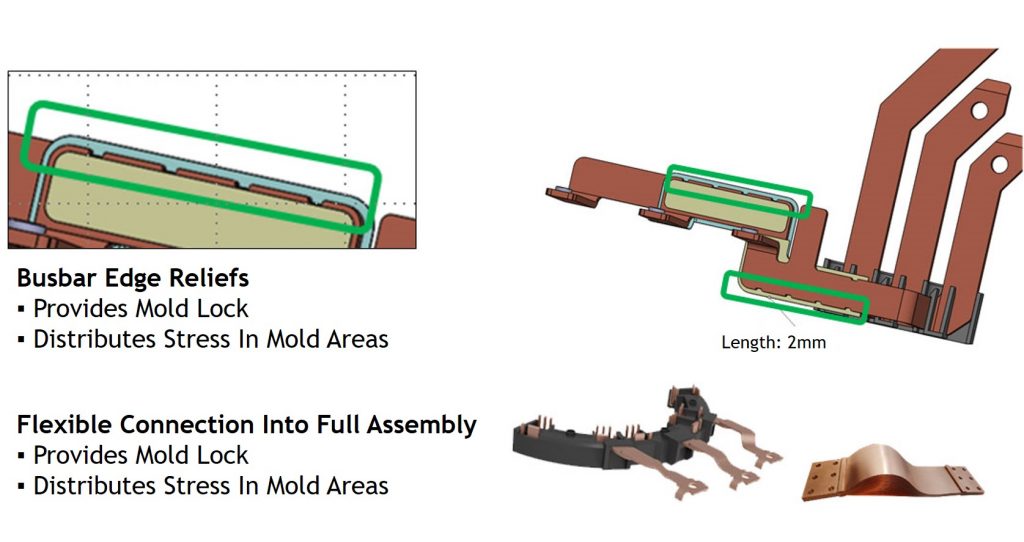
Intelligent Material Filling Processes
Another best practice pioneered by ENNOVI is the use of a precision material filling process that sequences the use of valve gates. This technique is helpful to reduce welding lines while improving unidirectional fiber orientation, minimizing warpage, and improving dimensional accuracy.
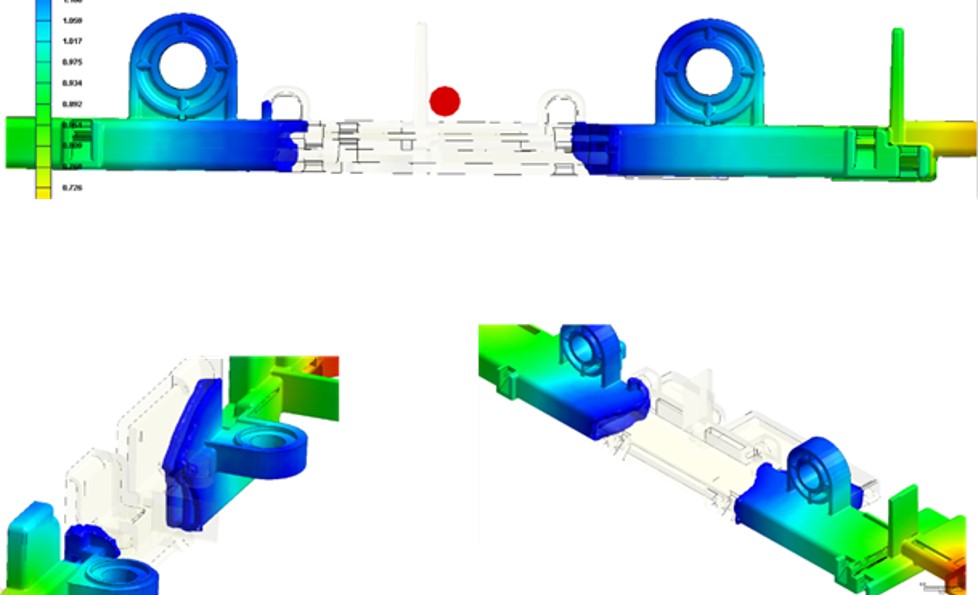
Summary
As described in this Technical Bulletin there is no “one-size-fits-all” approach to the challenges of creating complex multi-layer busbars for next-generation EV powertrains. Therefore, automotive companies need to start early and work closely with partners that have a proven track record across all the disciplines described in this Technical Bulletin.
Best practices for success include:
- Choose an experienced partner with broad design, manufacturing, and analysis skills.
- Start by asking the “Key checklist Questions” described on page 3.
- Begin the process with a Design for Manufacturing (DFM) mindset.
- Test the results of different design approaches early and throughout the process.
- Plan ahead for high-volume production ramp-up.
ENNOVI not only has the experience and expertise, but we have also taken the proactive step of creating a broad-based foundation of configurable and adaptable technologies from which we can provide initial design support, rapid prototyping, testing and ramp-up to full production.
These capabilities are backed by the ENNOVI worldwide design, distributed manufacturing and logistics organization that provides unparalleled local support for automotive makers across the globe.
